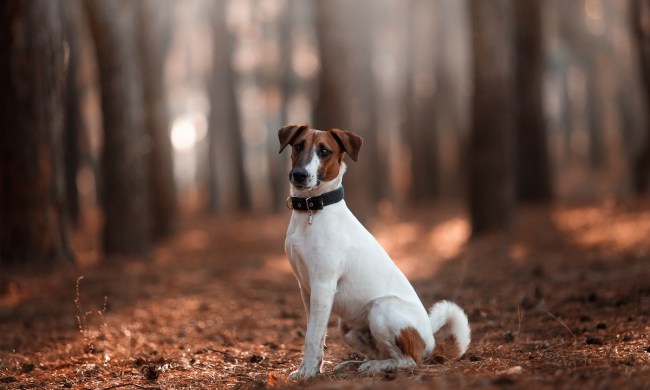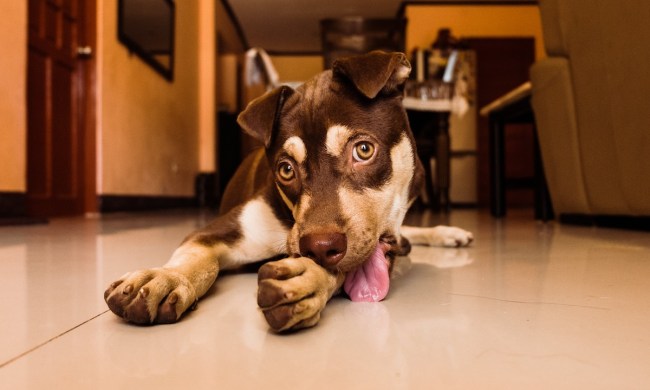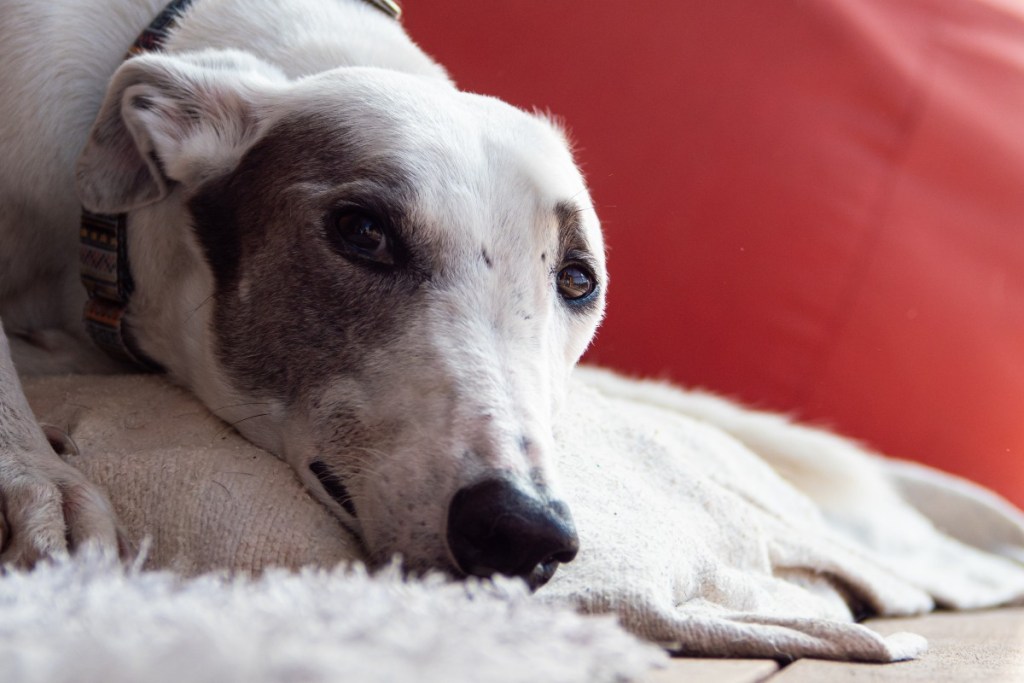
The greyhound dog breed has a sweet but noble demeanor. These large-sized hounds are built for speed with a narrow, aerodynamic body perfect for running down prey. History traces these dogs back to ancient Egypt.
Today, the pups like to track down treats. However, the breed has been at the center of controversy — through no fault of their own. Because of their speed, they’ve been used as race dogs, a practice now illegal in most states in the U.S.
The truth is, they’re best suited as companion animals. The greyhound dog breed is known for being highly affectionate and even welcoming toward other pups in the home. The dogs don’t require much grooming. Though greyhounds are sweet dogs, they aren’t for everyone. You’ll want to read up on the breed and what these dogs need before welcoming one into your home (something that is true for any pet). Here’s what to know about the greyhound (from ancient Egypt) to help you figure out if one is right for your home.
The history of the greyhound dog
The greyhound dog breed is one of the world’s oldest. Archaeologists have noted remnants of greyhounds that were 5,000 to 8,000 years old. The breed likely belonged to pharaohs and detected, chased, and captured wildlife in the Egyptian desserts before bringing it to their royal masters. Ancient Greeks and Romans also likely used the elegant hounds.
Since their days hunting for higher-ups of ancient empires, greyhounds have continued to remain a favorite among nobility and royalty. King James I and Prince Albert, Queen Victoria’s husband, owned greyhounds. The breed also seemed to be a favorite of literary royalty, holding the distinction as the first pups mentioned in English literature. William Shakespeare specifically references the dogs.
Though the greyhound’s origin is Egypt, the version of the breed we know and love today was developed over the 18th and 19th centuries in England. The American Kennel Club (AKC) recognized the breed in 1885. The breed began racing in the 1920s — a practice not only frowned on, but generally illegal these days.
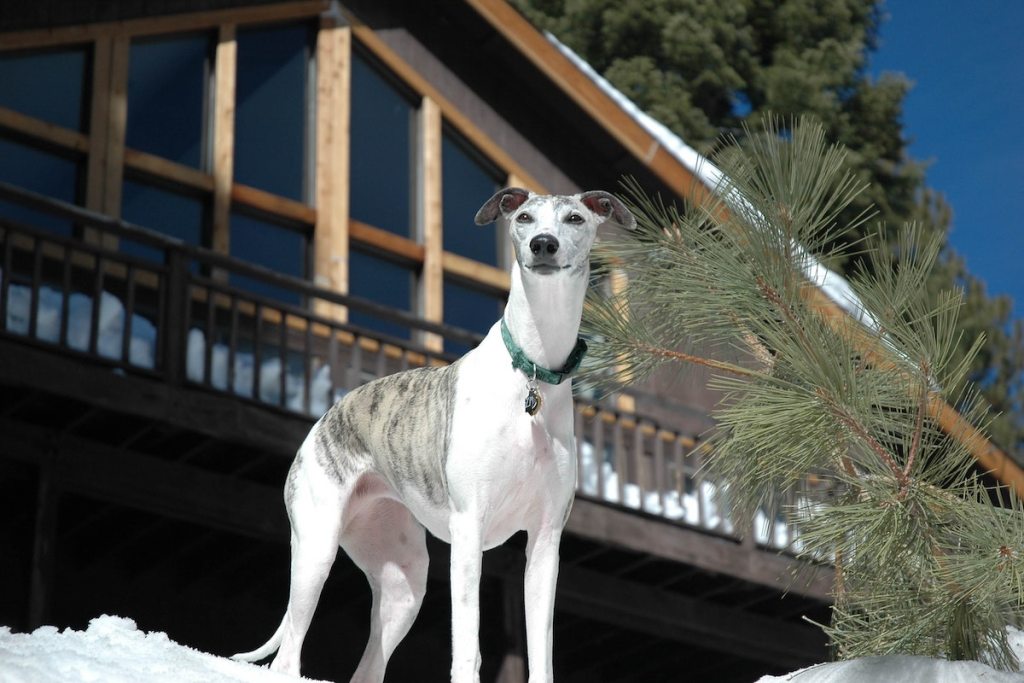
A complete guide to the greyhound dog
The greyhound’s aerodynamic build and sweet personality make it a popular family pet. Here’s what to know if you’re expecting (or considering) a greyhound.
Physical characteristics
According to the AKC, greyhounds must meet certain standards to be considered purebred, including:
- Height: 28 to 30 inches (male), 27 to 28 inches (female)
- Weight: 65 to 70 pounds (male), 60 to 65 pounds (female)
- Coat: Short and smooth, little grooming required
Common health conditions
Greyhounds generally live about 10 to 13 years and can lead happy, healthy lives. However, the breed is prone to specific health conditions. As a pet parent, you’ll want to be aware of these potential issues so you can get your pet care. In some situations, the quicker you can get your dog help, the better the outcome.
Common greyhound dog health issues include:
- Dental disease
- Pannus or chronic superficial keratitis (inflammation of the cornea)
- Bloat, or gastric dilatation-volvulus (GDV)
- Hip dysplasia
- Osteosacroma (bone cancer)
- Hypothyroidism
You can’t protect your pet from everything. However, there are some simple, practical ways to reduce your greyhound’s risk for conditions, including:
- Daily teeth brushing
- Attending annual vet checkups (they may be more frequent based on your pet’s age and health)
- Feeding your dog a diet consisting of at least 90% dog food
- Limiting treats
- Giving them plenty of water
- Walking them frequently — greyhounds need tons of physical activity to stay happy and healthy
- Keeping toxic food and plants out of reach
- Calling your vet if you notice your dog acting more lethargic, more or less hungry, has GI issues, or anything else that seems troubling
- Administering monthly preventatives
- Bathing your dog regularly
- Clipping nails regularly (broken or ingrown nails aren’t fatal but are painful)
Social traits
Greyhounds are known for being very affectionate. Expect a wagging tail and tons of kisses when you return home — even if it’s only been 5 minutes. Though they’ll miss you, greyhounds have an independent streak — they’re OK to be left alone for a few hours, making them a good fit for working families. They require physical stimulation and have a good bit of energy, so be sure you can walk them frequently or bring in a sitter or professional walker who can take them out during the day.
Greyhounds are usually good with other dogs. However, most greyhounds don’t do well with cats — their small stature brings out the predator in the greyhound.
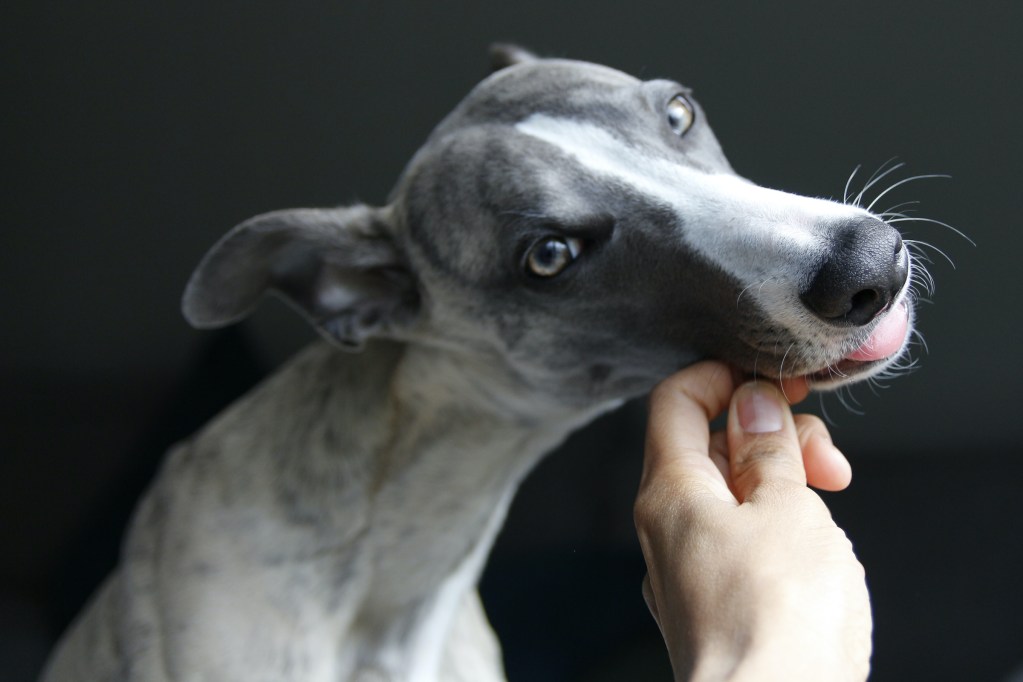
Greyhounds are friendly, good-looking pups. They can do well in a variety of homes, including families with other dogs. This breed doesn’t usually do well with cats, and they can be hit or miss with young children. A reputable breeder or rescue can give you insights into the specific greyhound you would like to make a new family member. It’s so important to research other breeds and ensure you have the best fit for your home and lifestyle. You want your new dog to be a forever friend.
Remember, breed affects the dog to some extent, but some of a pet’s personality relies on nurture. The most important factor is that you, the dog, and anyone else in your household (human or furry) mesh well with the dog.

